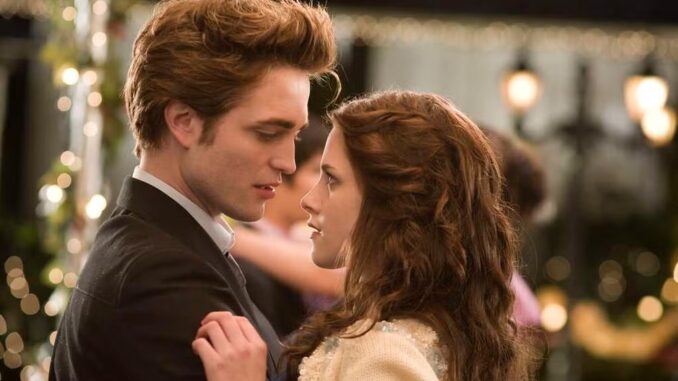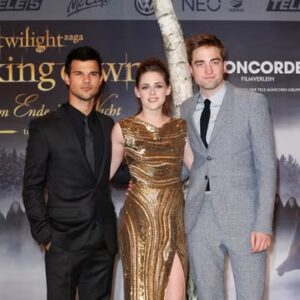
What if “Supermassive Black Hole” played during a fight sequence instead of the baseball game?
The Twilight saga is pretty much an era-defining piece of pop culture history (no, I will not be elaborating), so it’s crazy to think that it almost looks completely different from what we know now. In a recent episode of Alex Pappademas’ podcast, The Big Hit Show, the host is breaking down how Twilight became one of the biggest film franchises to date. It all started in the 2000s when MTV’s feature film division head David Gale and screenwriter Mark Lord pitched the novel’s plot to the media company. From there, a script starts to be with the tagline “Romeo and Juliet… with a vampire developed.” Um, what?
On the podcast, David explained that while he and Mark read and enjoyed the first novel, they had a lot of creative freedom as it wasn’t published at the time.
“What I can recall of my pitch was, I don’t really care for vampire stories, wasn’t my jam. But Romeo and Juliet, I love… So I went in and I was like, ‘Look, I don’t love vampires, but I love telling the story about these characters.’ And so that’s why they hired me,” Mark added. “They wanted it to take a concept and build in a structure that was far more like a cinematic structure and they wanted to just put in some more action to advance it more and give something more to the male audience. They thought they were going to lose the male audience with too much of a romance.”

Let’s rewind for a sec. Twilight was pitched as an action movie… in an attempt to cater to a male audience? Mark and David went on to describe that their version of the story included jet skis, speedboats, and explosions among other features that seem more Transformers than Forks, Washington.
“I remember that there was a boat chase in one scene, I remember that there’s a barn that burned down, and I remember that Bella’s dad died and then Bella got turned into a vampire, like all that happens in the first story,” Gillian Bohrer, a production executive at the movie’s production company, Summit Entertainment, added. “By the time we got ahold of the project, there was a fan base that loved the book for what it was. So our mentality the whole time was, ‘We are here to service that fan base.'”
Even the film’s director, Catherine Hardwicke, admitted that Mark’s script wasn’t a fit for the now-famous adaptation. “You’ve got to make it like the book. It’s the reason, I think, people online read the book, they like it, is because there’s this feeling of the first time you’ve ever fallen in love. And it’s kind of an ecstatic feeling.” She went on to say that Mark’s original script included a scene where Bella (who was a star athlete in this alternate dimension of the Twilight Cinematic Universe) was being chased by the FBI on jet skis. Somehow, I can still imagine Muse’s “Supermassive Black Hole” being on this soundtrack.
Luckily, Summit convinced Stephanie Meyer that her story was worth being adapted in a way that honored her fantasy/romance novel and we got the Twilight films as we know and love them.
